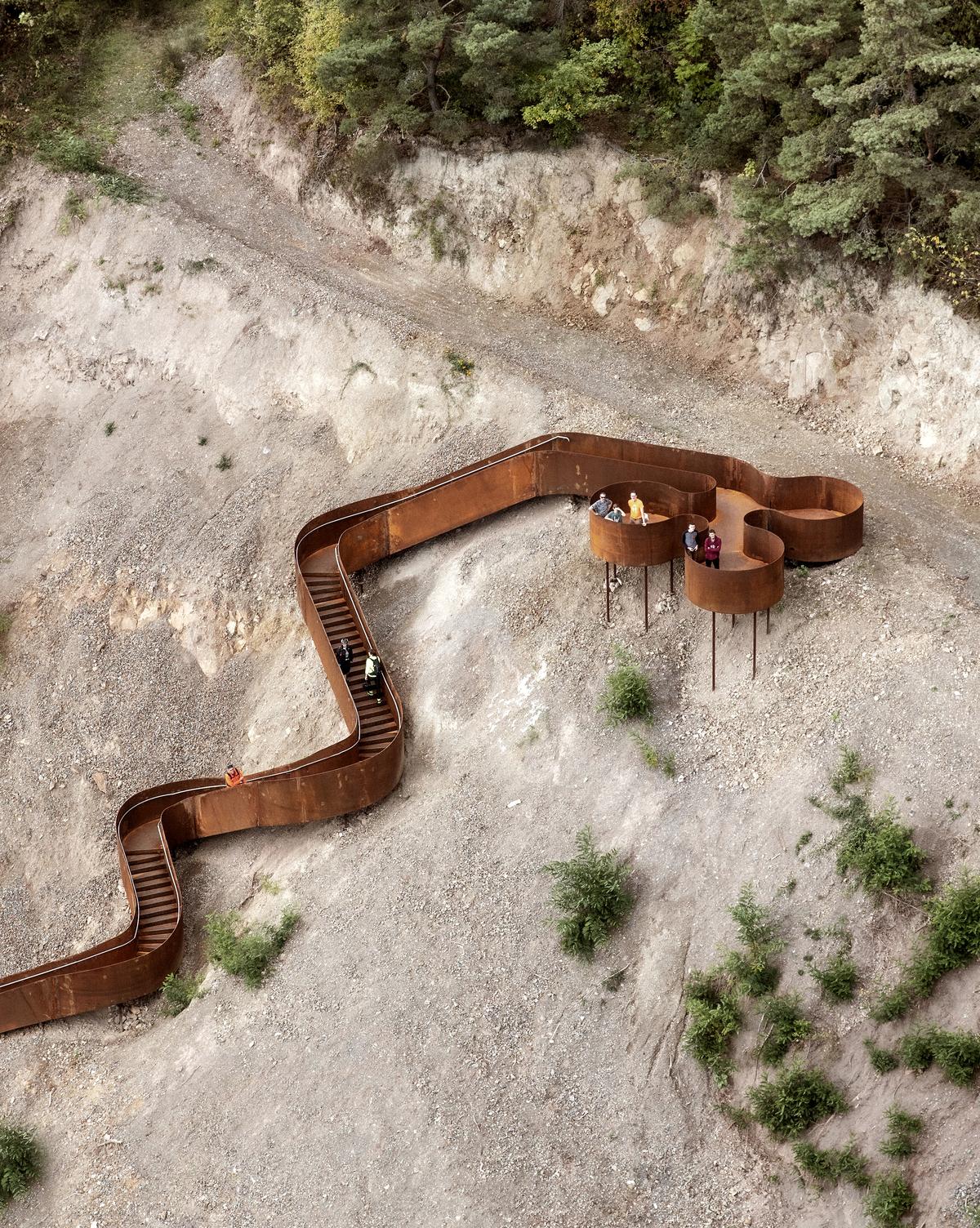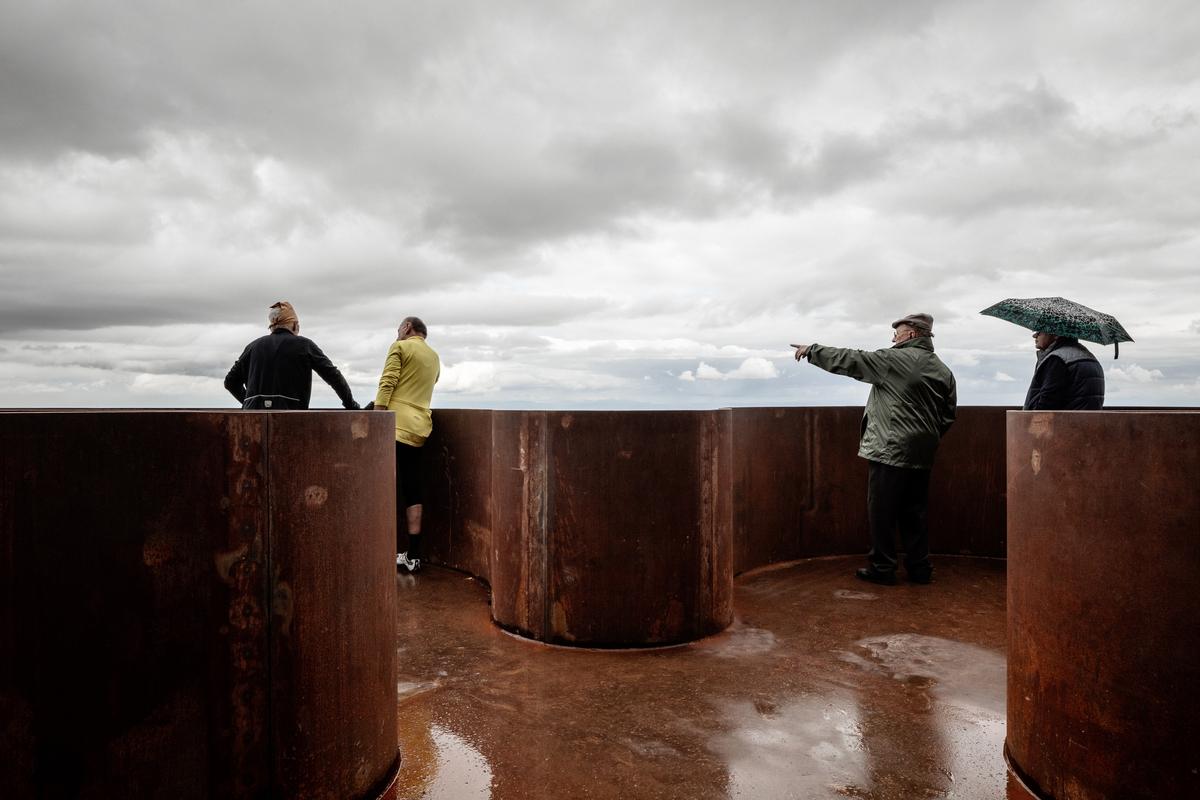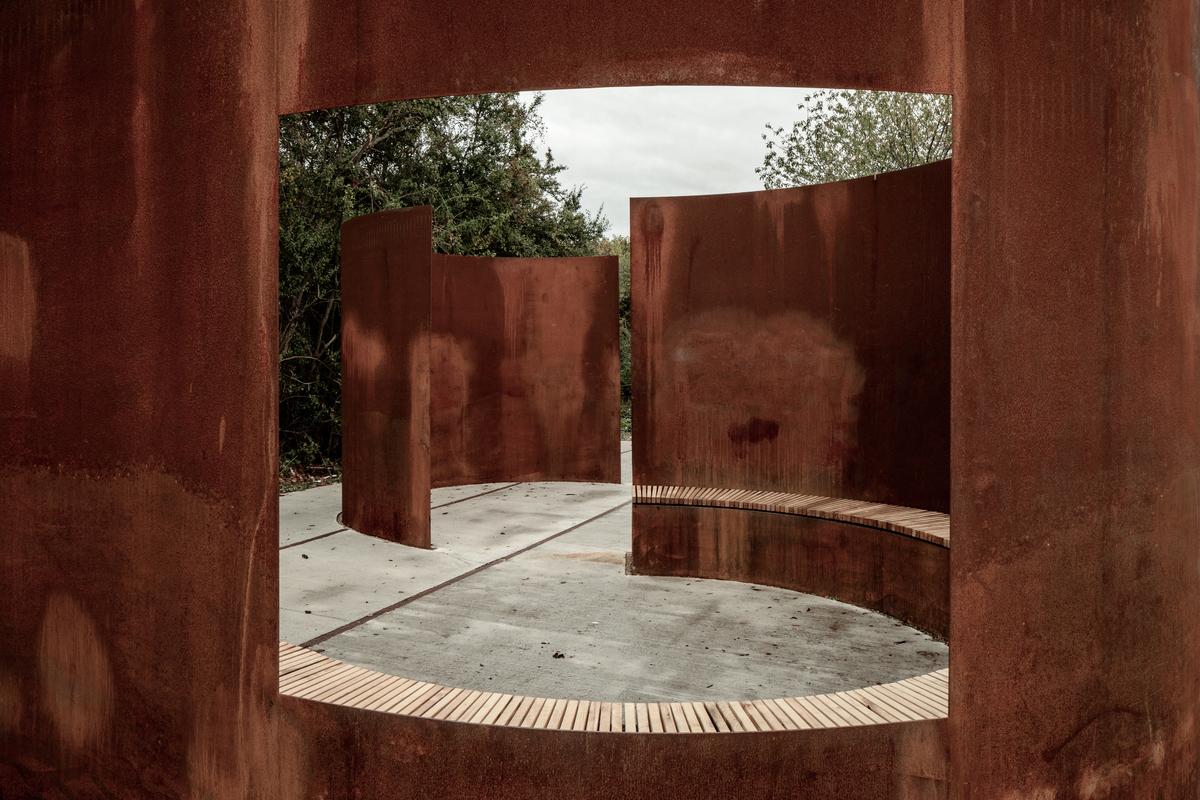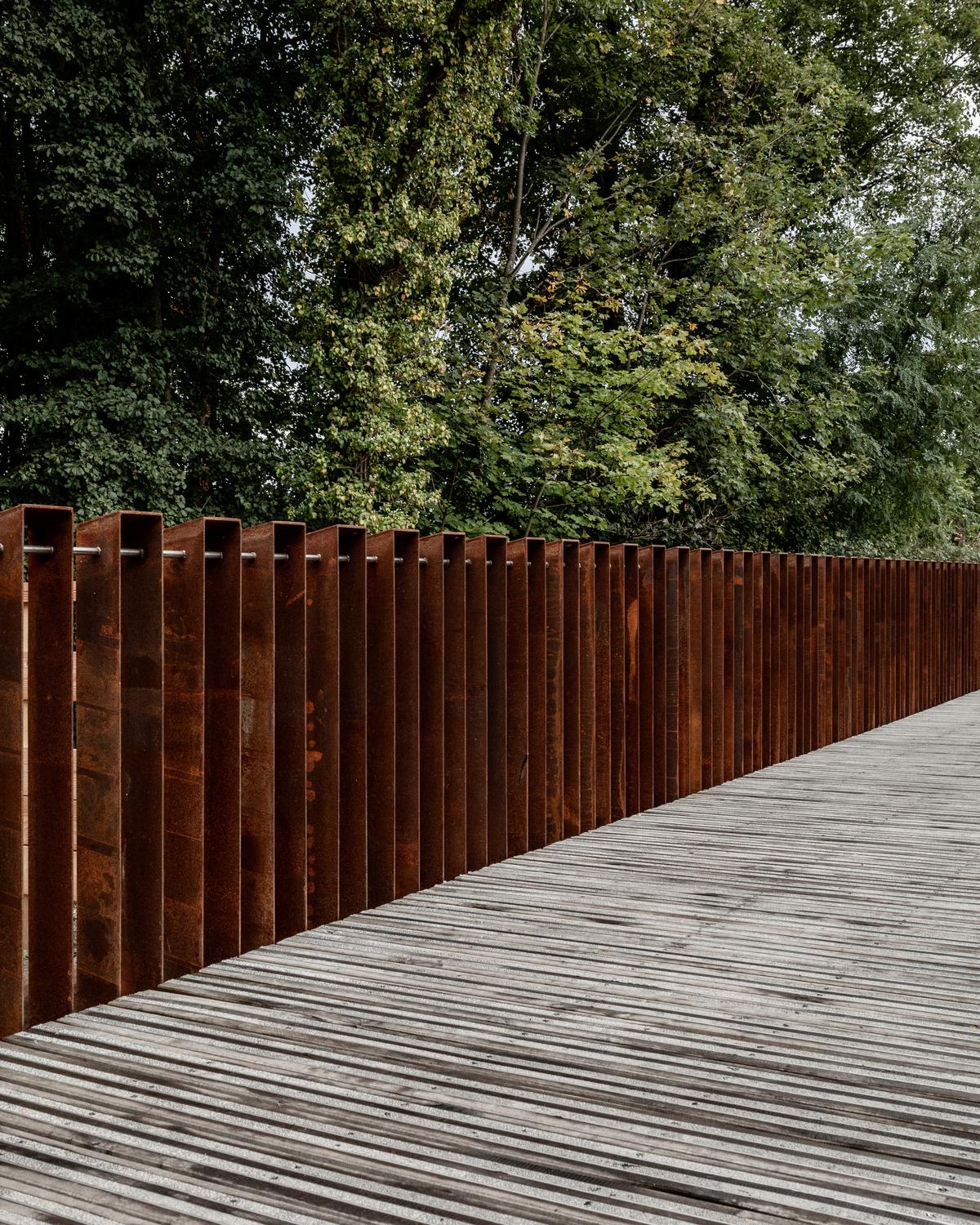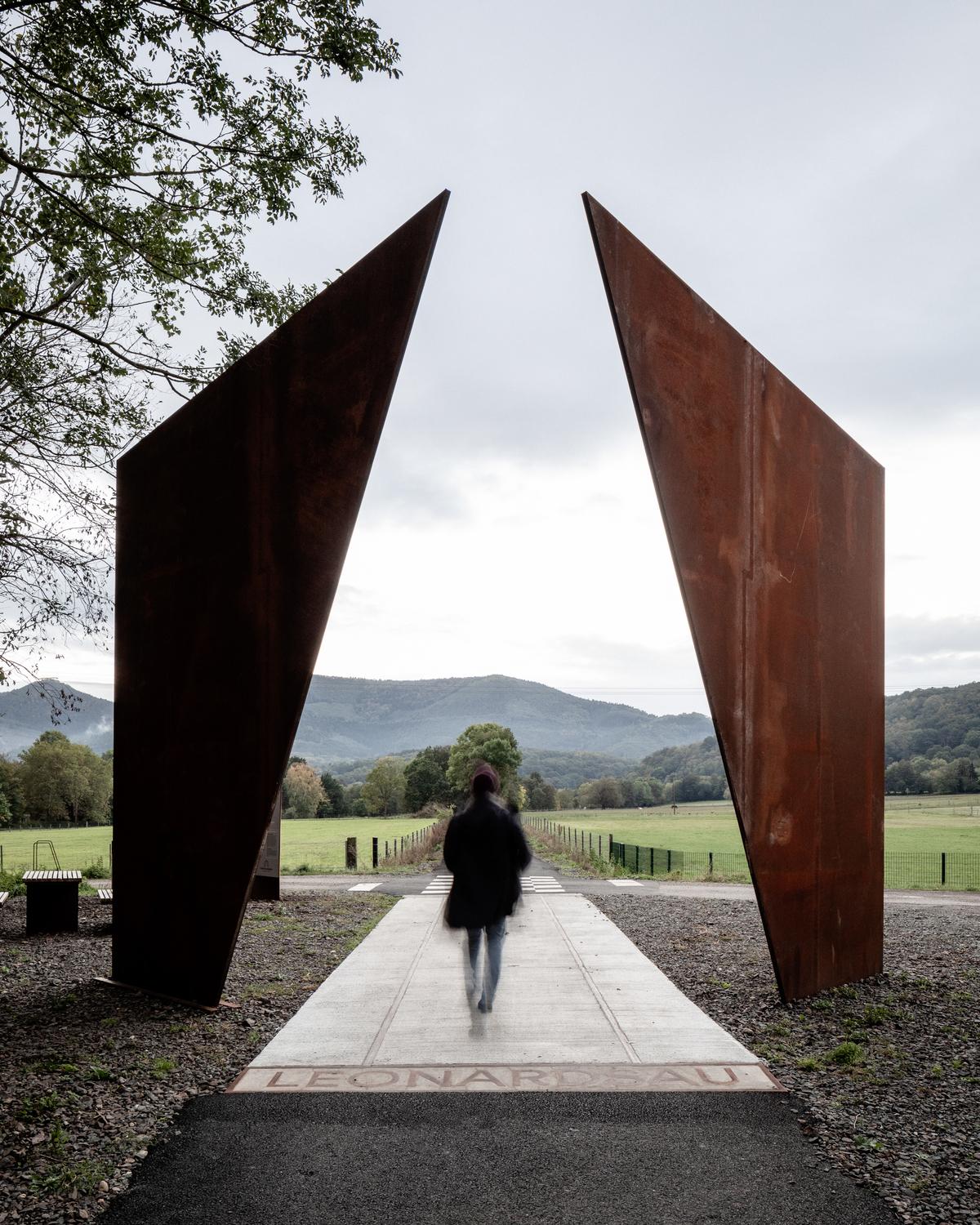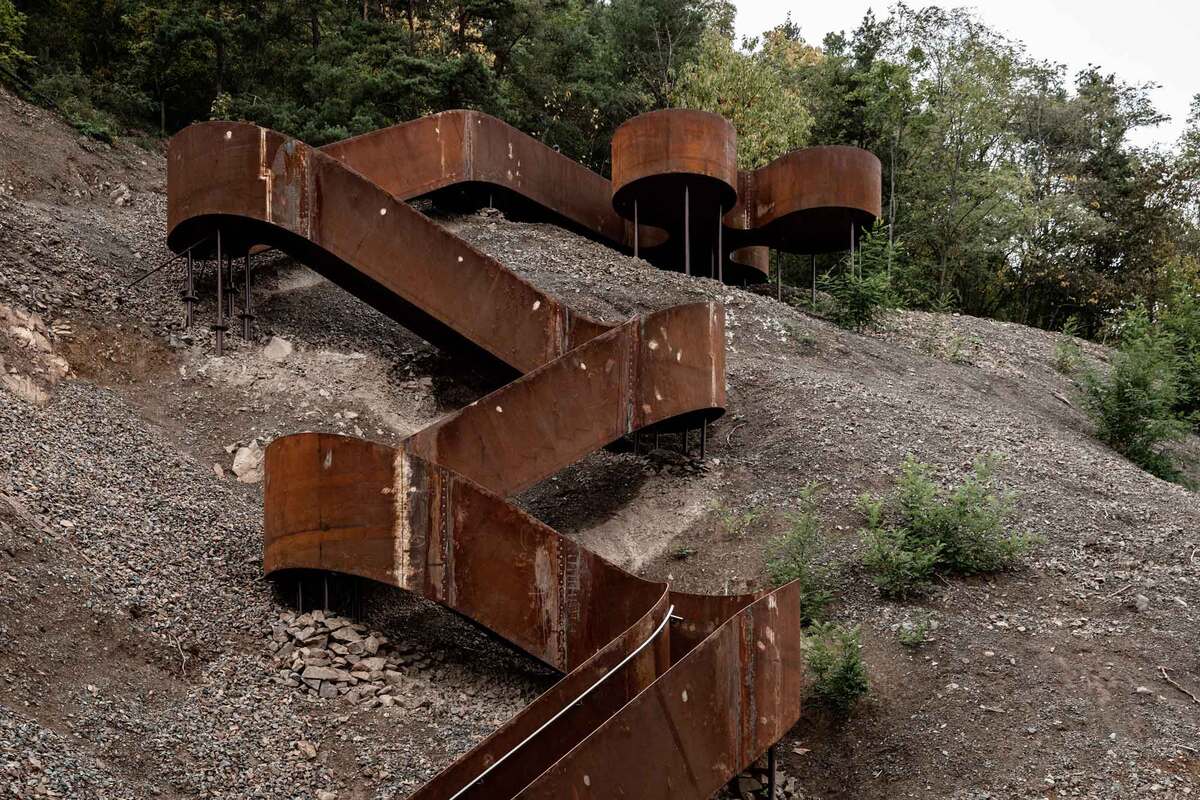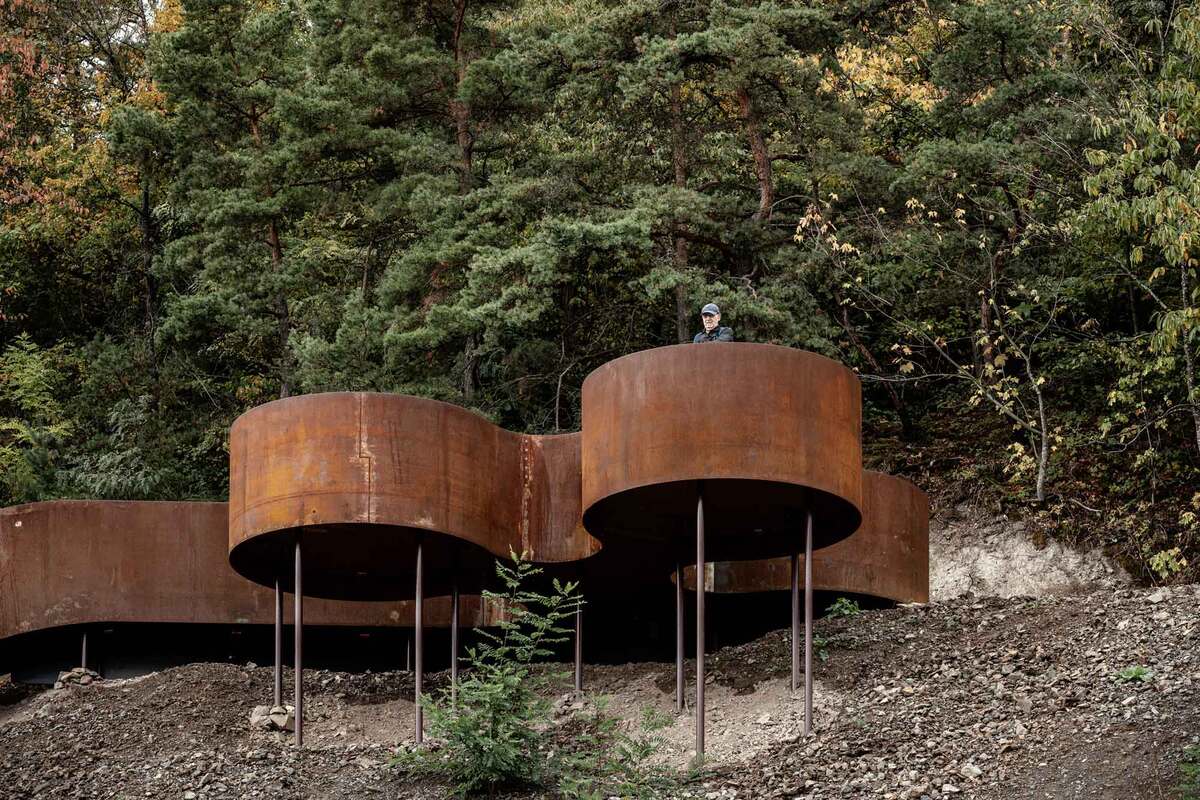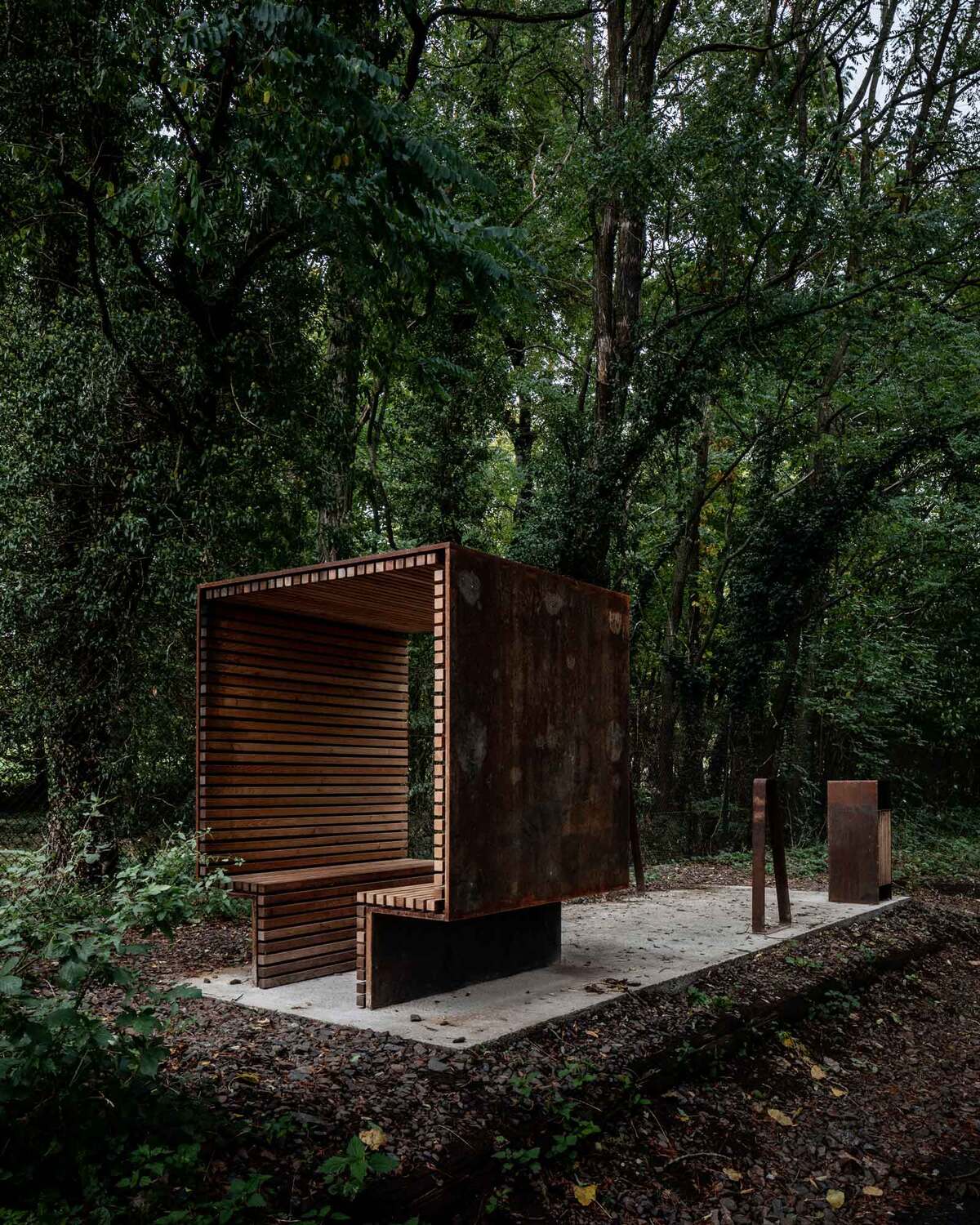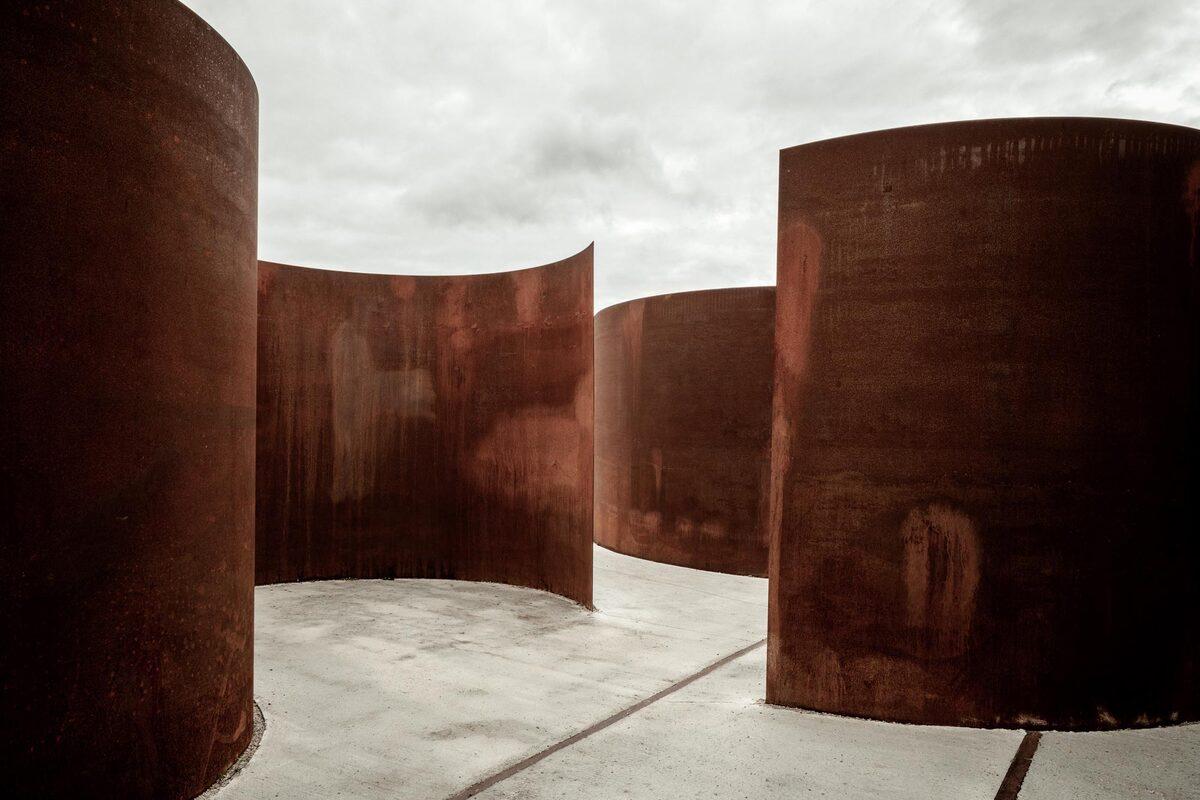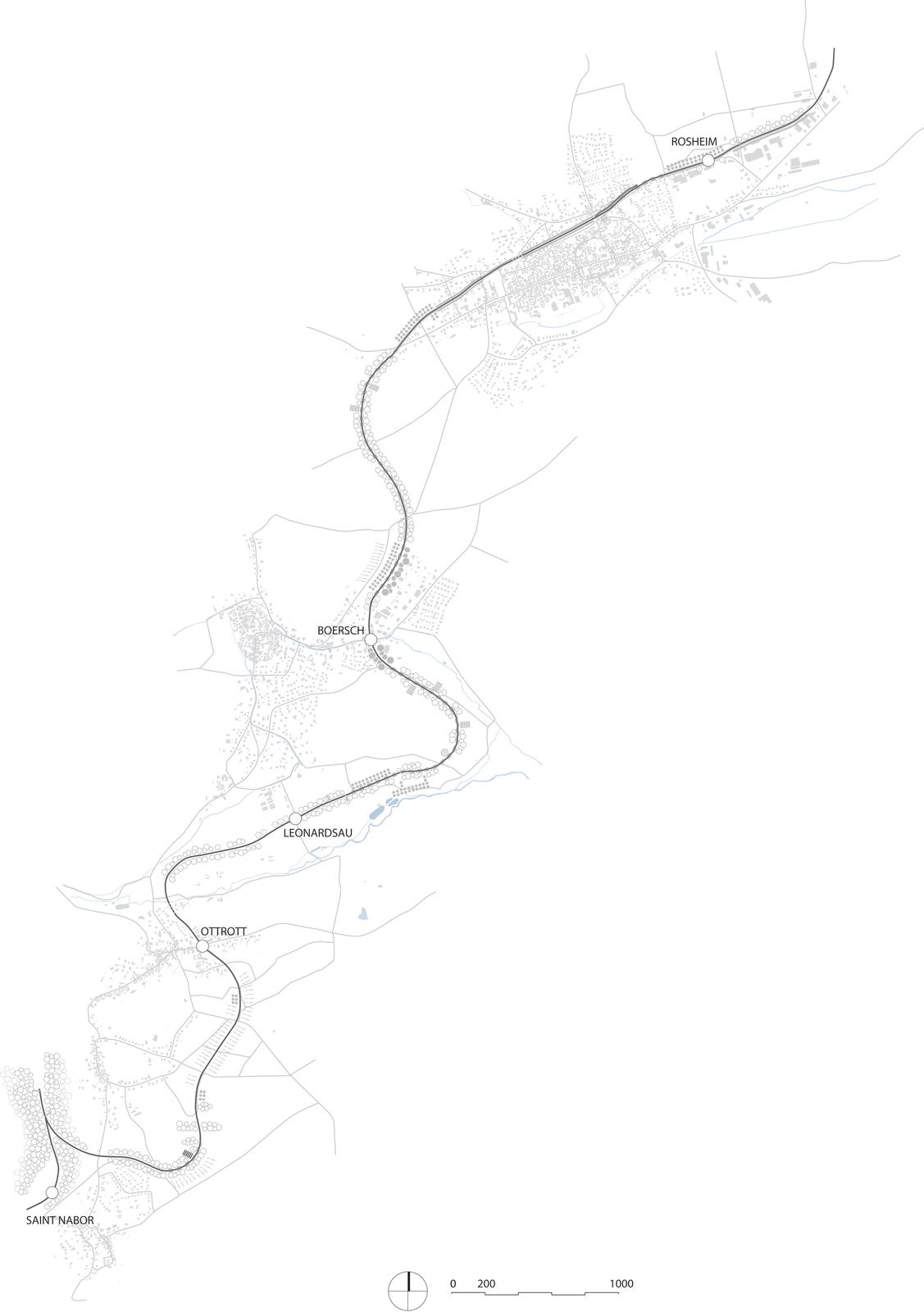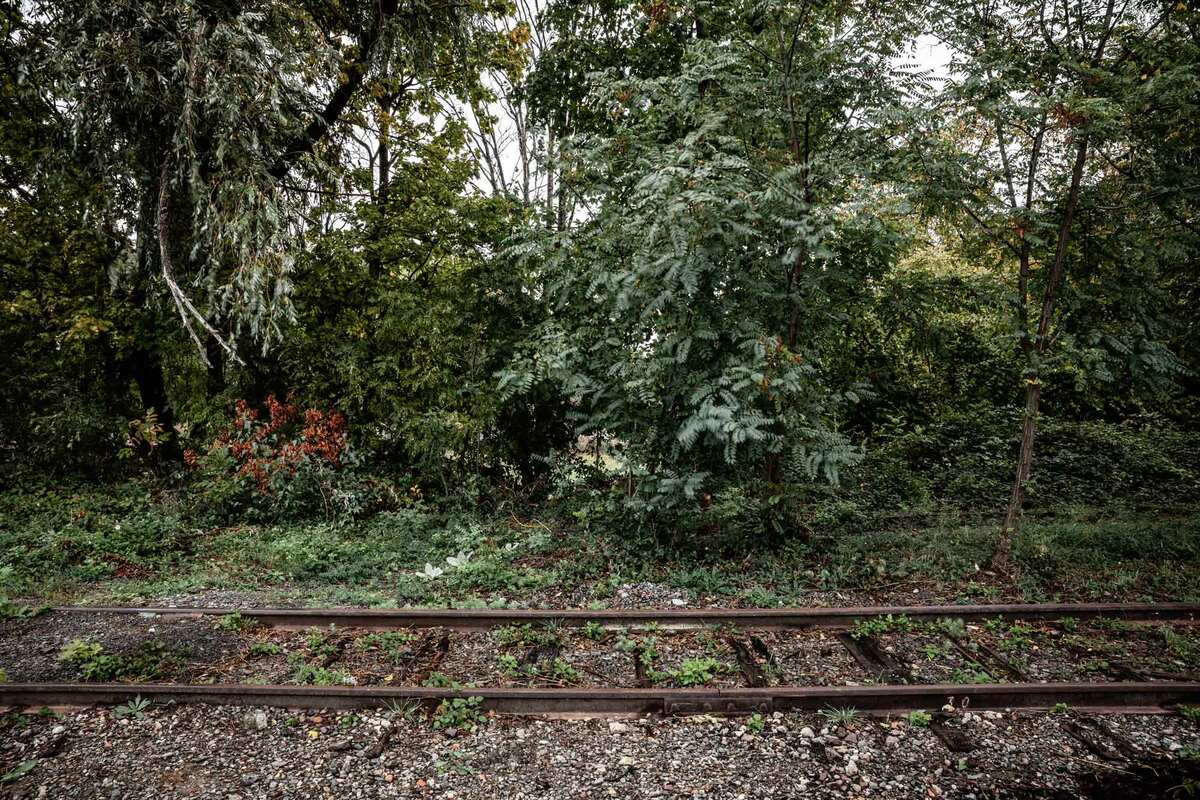Career Path
Last modified by the author on 12/11/2020 - 15:28
- Year of commitment : 2019
- Address 1 - street : RUE DU NEULAND - ROSHEIM, France
- Diameter : 11000
- CO2 Impact : Promote soft transport.
- Sustainable mobility : Greenways
- Circular economy and waste management : Reuse, Optimization of ressources, Bio-based materials
- Biodiversity & Ecosystems : / Environment education, Eco-tourism, Ecosystems preservation /
-
3 700 000 €
- Builder
Nouyrit metallerie - Manager / Dealer
Community of Communes of the Portes de Rosheim
“Travel is like a door through which one leaves reality as if to enter an unexplored reality that seems like a dream” Guy de Maupassant. Going beyond the essential functional layout, in order to invite the user on a voyage of discovery, should be the ambition of the reconquest of the Rosheim - Saint-Nabor railway line.
The project transforms the old railway line between the villages of Rosheim and Saint-Nabor into a pedestrian and cycle path, a green path that stands out like an undulating lace in the landscape of Alsace. The Chemin des Carrières winds between vineyards, forests and villages. Along the 11 km path, you will discover a story divided into five chapters. Five stops, in homage to the railway, where unusual elements punctuate the path while the railway tracks merge with corten steel pavilions, belvederes and installations.
The trail offers different worlds and highlights remarkable places while the landscape architecture highlights the territory by drawing attention to elements that are sometimes visible, sometimes difficult to perceive. The use of local materials, experiential know-how and a design language adapted to the place awaken the senses of visitors. The forgotten landscapes are rediscovered, and the daily landscape is seen from the greenway with new eyes.
Progress Status
Delivered
Data Reliability
Self-declared
Funding Type
Public
Website Enterprise / Infrastructure
https://www.eurokorten.com/voie-verte-rosheim-st-nabor/https://www.cc-portesderosheim.fr/decouvrir_le_territoire/documentation_et_ouvrages_33.php
Sustainable Development
Testimony / Feedback
"The doors Happiness is exemplary in terms of development - I think everyone is unanimous about the result of this achievement convincing - in its human dimension. The creation of the greenway was a great opportunity to create links, to enrich ourselves with the expertise and skills of each and to see with great satisfaction to what extent a regional project can generate commitment and synergies!
A BIG THANK YOU to all of you for this adventure that just begs to continue! "
Testimony of Michel HERR / President - CCPR
---------------------------------
"Les Portes Bonheur - the path of Careers are an inspiring architectural and human innovation, reflecting the commitment of a remarkable territory in the service of a good living together".
Testimonial from Audrey DAMBIER / General Manager of Services - CCPR
---------------------------------
“In a quarry, it is rare to be able to walk on a multi-faceted territorial project: heritage, environmental, tourist, cultural, economic, institutional, without forgetting the human dimension.
Because the career path was for us, above all, a collective adventure, with a commitment from all, at all times.
We have engraved in our memories this lovely word from Marcel Proust: “The real voyage of discovery does not consist in seeking new landscapes, but in having new eyes. "
With new eyes, long life at the Hapiness Doors ! ”.
Testimonial from Stéphane OBRINGER / Voiturez & Obringer Communication
Governance
Community of Communes of the Portes de Rosheim
Local Authority
Nouyrit metallerie
Construction Industry
Community of Communes of the Portes de Rosheim
Public
Learning points
It was both fun and educational to be allowed to delve into the local expertise the Alsace region has to offer. We learned a lot about the importance of good collaboration and the importance of the end result that can win a good process along the way.
Cross-border collaborations have given us the opportunity to create something that the local people actually want and will use for new sustainable tourism, and the opportunity to develop recycled materials using local crafts. It is at the same time good for the environment, the local economy and helps to honor the history of the region.
Being able to transfer Scandinavian architecture to the French countryside and see new collaborations and design languages merging has been a great lesson and something that we will take with us further.
The Chemin des Carrières has been a missing link in the cohesive network of cycle paths across Europe. The route is also a new section for hiking at Mont Sainte-Odile. The infrastructure problems led the villages to exit the tourism industry. The area has now been put on the map and has become a tourist attraction due to the spectacular architectural forms of the architecture and the landscape. Chemin des Carrières, now in contact with existing infrastructure, strengthens the local industry and leads to sustainable innovation in the tourism industry. The inhabitants have strengthened their identity and their commitment. The materials are made from recycled materials for sustainable industrialization and a circular economy.
Sustainable Solutions
- Quality of life :
- Mobility :
- Economic development :
- Biodiversity :
- Citizen participation
- Air quality
- Circular economy
- Soft transportation
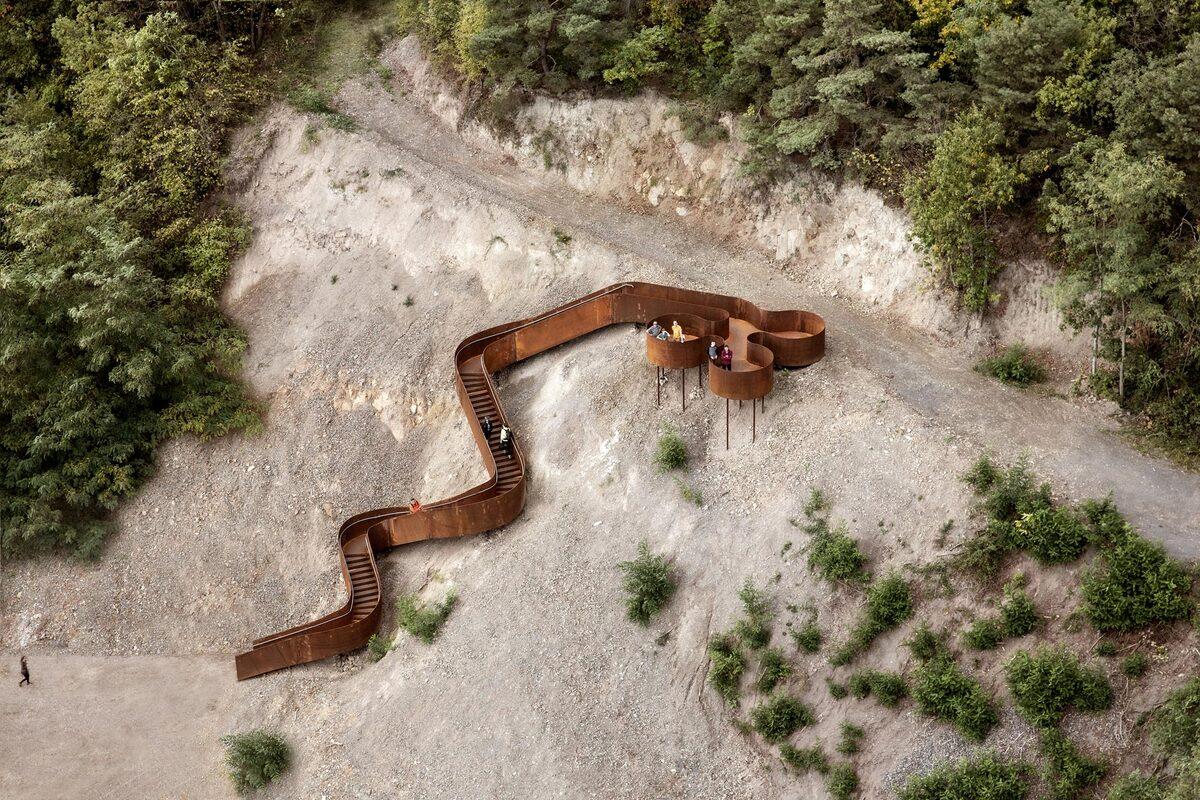
Life on earth
Life on earth
An important objective for Reiulf Ramstad Arkitekter and Parenthèse Paysage, in close collaboration with local experts in biological diversity, has been to create an architecture that does not compromise the landscape and the context. We have been aware of the consequences of attracting people to nature and made sure that neither the road nor the pavilions interfere with the existing and fragile flora and fauna.
Noise and road emissions have been reduced by having people restrict transportation by cars or buses. We reused railway materials and processed them locally to avoid extracting new minerals and reducing transportation emissions in the construction process. Along the Chemin des Carrières we have designed a number of information boards so that the public can get to know the local flora and fauna, at the same time we have created bee hotels and bird houses, among others, to promote biological diversity.
Collaborate to achieve goals
Chemin des Carrières is a project located on the border between landscape architecture, town planning, industrial design and architecture. As a Norwegian architectural firm, we are used to having an open and interdisciplinary dialogue, which we quickly discovered that it was easy to transfer to the project in France. We have renewed partnerships and acquired new partners. It is an educational project where everyone's knowledge has been put on the table, analyzed and discussed to obtain a thoughtful result.
We hired local industrial workers (Métallerie Nouyrit) and engineers (Favier Verne and Berest) to develop a good project with a high level of detail. The pavilions, line of furnishings and installations were developed with the landscape architects, and a local graphic designer provided the visual profile. The builders were very involved when they saw the benefits of town planning that the project brought by merging the villages, creating new sustainable infrastructure, new economies and the tourism industry.
- Quality of life :
- Mobility :
- Economic development :
- Biodiversity :
- Citizen participation
- Air quality
- Circular economy
- Soft transportation
Photo credit
Florent Michel @ 11:45 Reiulf Ramstad Architects
Reasons for participating in the competition(s)
Le projet transforme l'ancienne voie ferrée entre les villages de Rosheim et Saint-Nabor en un sentier pédestre et cyclable, et se marque comme un fil se déroulant dans le paysage des plaines Alsatiennes. Le chemin des carrières serpente entre vignobles, forêts et villages. Le long des 11 km de parcours, vous découvrirez une histoire divisée en cinq chapitres. Cinq arrêts, en hommage à la voie ferrée, où des éléments insolites interfèrent avec la route alors que les voies ferrées se confondent avec des pavillons en acier, des belvédères et des installations. Le sentier offre un certain nombre d'univers différents et met en valeur des lieux remarquables, l'architecture paysagère met en valeur la région subtilemment en mettant en valeur ce qui existe déjà. L'utilisation de matériaux locaux, un savoir-faire détaillé et un language de conception adapté au lieu éveillent les sens des visiteurs. Les paysages oubliés sont redécouverts, et le paysage quotidien est expérimenté depuis la Voie Verte avec de nouveaux yeux.
Après avoir visité le site et la voie ferrée existante, connaître les enjeux et exploré le contexte, nous avons mis en place une collaboration participative et un dialogue continu qiu ont suivi le projet depuis le début et ont constitué une part importante du processus de conception. Le programme du concours était très ouvert aux propositions, la municipalité voulait une voie verte, mais après avoir visité la région, nous voulions que la route propose plus que cela. Le paysage contenait de nombreuses identités sous forme d'espaces physiques ainsi que de cadres culturels que nous souhaitions intégrer dans le projet. Nous voulions mettre en valeur des lieux du paysage, des arrêts où des installations de même matérialité (en acier corten) indiquent quelque chose d'unique pour chaque village. Pour rendre hommage au chemin de fer et honorer l'histoire de la région, les voies ferrées ont été préservées et intégré à l'itinéraire en de nombreux endroits. Dans une économie circulaire, il est important de réutiliser, et une partie du métal a été vendu à une aciérie pour financer les coûts de construction. En étroite collaboration avec Parenthèse Paysage, nous avons exploré ce que sont les différents éléments que les pavillons devaient contenir, comment ils devraient être conçus et où dans le paysage ils devraient se trouver. Des modèles grandeur nature ont été construits et testés à la métallerie. Tout au long du projet, nous avons travaillé en étroite collaboration avec le client, le maire et les élus locaux fin de développer de nouvelles façons de créer des rencontres spontanées. Fort d'une expertise et d'un savoir-faire locaux, le projet parvient à générer des espaces publics qui répondent à la manière dont la population alsacienne utilise l'environnement et le paysage de la région d'Alsace.Building candidate in the category





